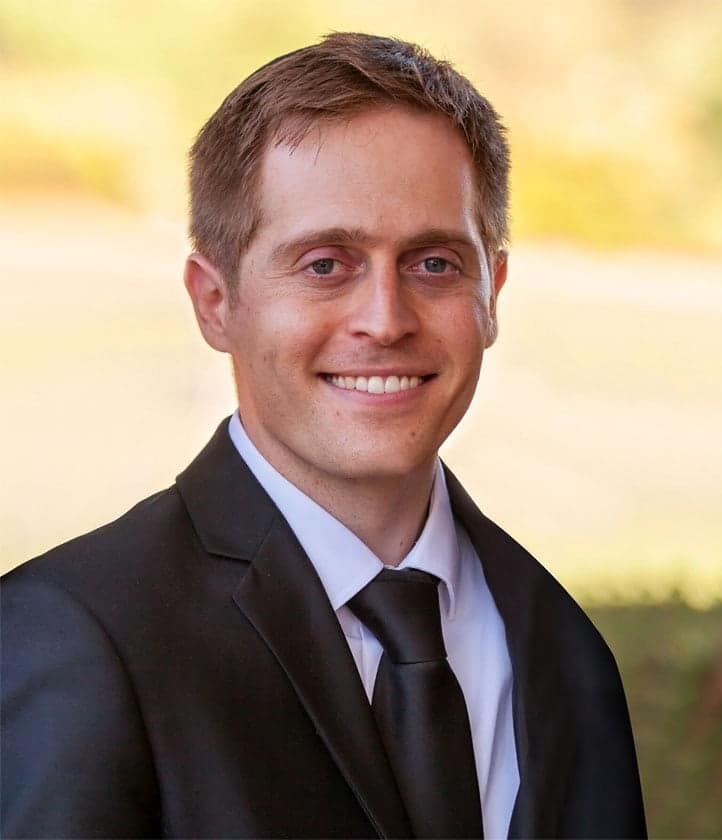
According to the San Francisco Public Defender’s Office, 92% of gang enhancements are handed out to people of color. California laws defining gang enhancements are vague and allow prosecutors to meet relatively low standards of proof. They are a primary driver of mass incarceration throughout the state.
AB 333 lawyer Aaron Spolin explains this new law and how to beat gang enhancement charges and allegations. As a former prosecutor and award-winning criminal appeals attorney, Mr. Spolin has developed proven strategies to fight back against these charges. Spolin Law P.C. is here to take on your gang enhancement case.
To learn how Spolin Law P.C. can handle your case as the new AB 333 law develops, call us at (310) 424-5816 to learn how we can help in your case.
What Does AB 333 Do?
AB 333, also called The STEP Forward Act, targets the damage that gang enhancements cause to families and communities throughout California. It seeks to reduce the racial imbalance of enhancements in Penal Code (PC) 186.22 by adding Section 1109.
Some of the goals AB 333 include:
- To end the prosecutors’ ability to claim that people are gang members because they are from the same community, related, or know one another.
- To reduce the list of crimes allowed for gang enhancements.
- To prohibit the use of the current change as proof of a “pattern” of criminal gang activity.
- To require direct evidence of current gang activity by the defendant.
- To separate gang allegations from underlying charges at trial.
In order to understand what AB 333 will do, you must understand the old law as well. Here are some comparisons.
Old Gang Enhancement Law
Under California PC 186.22(b), a defendant who is convicted of certain criminal offenses can face a greater sentence if the prosecution can prove the following:
- The crime was committed for the benefit of the criminal street gang.
- The defendant intended to assist, further or promote criminal conduct by gang members.
The old law defined “criminal street gang” as three or more people in a group that has a common name or identifying sign or symbol. One of that group’s primary activities must be committing crimes and the group members must be engaged in a pattern of criminal activity either individually or collectively.
The gang enhancement can turn a misdemeanor conviction into a felony that is punishable by up to three years in prison. If added to a crime that is already a felony, it could increase the punishment by two additional years up to life in prison.
New Gang Enhancement Law

AB 333 would update PC 186.22 by redefining certain terms and increasing the standards for applying gang enhancements.
Under AB 333, a defendant can only get a greater sentence with gang enhancements if the prosecution can prove:
- The crimes committed form a pattern of criminal gang activity.
- The crimes have benefitted a criminal street gang, and the common benefit must be more than reputational.
Unlike the current law, the new law specifically states that the current charge the defendant is facing may not be used as proof of a pattern of criminal gang activity. The prosecution must show through other previous criminal activity that there was a pattern.
By indicating that the “common benefit must be more than reputational,” the law would force the prosecution to prove an actual connection between the defendant and a gang. Currently, defendants are convicted of gang activity when they may have simply been from the same neighborhood, related to gang members, or acquaintances with a gang.
Additionally, this new law removes looting, felony vandalism, and specified personal identify fraud violations from crimes that may be counted as “a pattern of criminal gang activity.”
If the prosecution is seeking a gang enhancement, under the new law they must first prove the defendant’s guilt of the underlying offense and a further proceeding on the sentence enhancement would occur after that finding of guilt. A charge of active participation in a criminal street gang would be tried separately from other counts that do not require gang enhancement as an element of the crime.
Also, the new law redefines “criminal street gang” as a group of three or more persons with a common name or identifying sign or symbol. One of the primary activities of the group must be the commission of one or more enumerated criminal acts, and the members must be collectively engaged in a pattern of criminal gang activity. Thus, the group must engage in a pattern of criminal gang activity together, not necessarily as separate individuals.
AB 333 extends the court’s ability to select a sentence for gang enhancements that best serves the interest of justice through January 1, 2023. The existing law was set to revert to the middle term of sentence enhancements on January 1, 2022.
Background of the Law & Why Changes Were Necessary
AB 333 is addressing the results of the 1988 California law called the “STEP Act” or “Street Terrorism Enforcement and Prevention Act” and subsequent propositions. The STEP Act had a goal to eliminate “criminal activity by street gangs.” It created a three-year enhancement for gang-related crimes. However, the law was only supposed to apply when “the provable purpose of the gang is to commit serious and violent crime” and the gang member knew of that purpose when they joined.
In 2000, Prop. 21 increased penalties that accompanied gang enhancements and broadened their application. Some gang enhancements have even led to a life sentence. Gang enhancements have even been handed out for nonviolent crimes and misdemeanors, often resulting in extended and mandatory prison sentences. Some of the people who have received these enhancements based on alleged gang membership simply because they are from the same neighborhood as acquaintances who are gang members.
A statewide database used by the police that tracks alleged gang members has recorded 68% Latinx individuals, 24% Black individuals, and 6% White individuals. Because law enforcement over police and target Black and Brown communities, they are more likely to be overrepresented than White communities, which are not as highly policed. Thus, the data recorded by California’s database likely underrepresents suspected white gang members.
In a 2020 report by the Penal Code Revision Committee, it was found that 68% of people currently in prison with gang enhancements are Latinx. Approximately 24% are Black. Only 3% are White, and 5% are of other races. Gang enhancements are doled out to Black and Brown people at a much higher rate than any other race.
- What Does AB 333 Do?
- Who Does AB 333 Apply To?
- How to Beat Gang Enhancement Allegations
- How a Top CA Criminal Defense Lawyer Can Help
Who Does AB 333 Apply To?
AB 333 applies to anyone who is charged with Penal Code 186.22 — Participation in a Street Gang. Anyone who has been charged with certain specified crimes with the potential for an increased sentence under gang enhancements is also included.
Crimes that may be considered for gang enhancement include:
- Assault with a deadly weapon or by means of force likely to produce great bodily injury
- Robbery
- Unlawful homicide or manslaughter
- Sale, possession for sale, transportation, manufacture, offer for sale, or offer for manufacture, a controlled substance
- Shooting at an inhabited dwelling or occupied motor vehicle
- Discharging or permitting the discharge of a firearm from a motor vehicle
- Arson
- Intimidation of witnesses and victims
- Grand theft
- Grand theft of any vehicle, firearm, trailer, or vessel
- Burglary
- Rape
- Money laundering
- Kidnapping
- Mayhem
- Aggravated Mayhem
- Torture
- Felony extortion
- Carjacking
- Sale, delivery, or transfer of a firearm
- Possession of a pistol, revolver, or other firearm capable of being concealed upon the person
- Threats to commit crimes resulting in death or great bodily injury
- Theft and unlawful taking or driving of a vehicle
- Prohibited possession of a firearm in violation of the law
- Carrying a concealed firearm in violation of the law
- Carrying a loaded firearm in violation of the law
AB 333 specifically removes looting, felony vandalism, and specified personal identify fraud from the old law’s list of crimes that may be enhanced by a gang enhancement.
- What Does AB 333 Do?
- Who Does AB 333 Apply To?
- How to Beat Gang Enhancement Allegations
- How a Top CA Criminal Defense Lawyer Can Help
How to Beat Gang Enhancement Allegations
To fight gang enhancement charges, your criminal defense attorney must attack the allegations being made against you by the state of California. The prosecution must prove the aforementioned elements to get the court to increase your sentence based on gang enhancements. Some of the defenses we can use include the following.
There Was No Underlying Crime
Under the new law, the prosecutor must prove separately that you are guilty of an underlying crime. You are only subject to the gang enhancement law if you actually committed the crime. They must prove the elements of that crime beyond a reasonable doubt. Your CA criminal defense lawyer will work to prove that you didn’t commit the underlying crime; therefore, you cannot be charged with a gang enhancement.
You Do Not Have a Pattern of Criminal Gang Activity
The prosecution must prove that you participated in a pattern of criminal gang activity, collectively, with other members of the gang. They cannot point to the current charges as part of that pattern. Thus, they must essentially bring in evidence that you have committed other crimes along with other gang members. Spolin Law P.C. will work to exclude (or suppress) evidence that the prosecution might use in this aspect and show that they cannot meet this element.
You Did Not Benefit a Gang
It is the prosecution’s burden to prove that your actions benefitted a criminal street gang. We can fight those allegations by showing that they did not. We may present witness statements and other evidence to prove that your actions did not benefit or assist a street gang.
You Are Not a Gang Member
Under the old gang enhancement law, the prosecution often built a relationship between the defendant and gang members based on reputational linkages. For example, if someone was related to a gang member and lived in the same neighborhood, the prosecution might pitch to the jury that the defendant was also a gang member. These reputational links have been eliminated under the new gang enhancement rule. The prosecution must now prove that your relationship is more than reputational.
- What Does AB 333 Do?
- Who Does AB 333 Apply To?
- How to Beat Gang Enhancement Allegations
- How a Top CA Criminal Defense Lawyer Can Help
How a Top CA Criminal Defense Lawyer Can Help

Because AB 333 is a brand new law, it’s important to work with a lawyer who is familiar with the legal process in California. We are on the forefront of this law as well as many others that may result in a positive outcome for our clients. We diligently follow the workings of the California Legislature and prepare to aggressively argue in their favor for lesser penalties, sentence reductions, and a new trial, when applicable.
Winning these cases requires skillful representation and considerable experience in both criminal defense and appellate law. Spolin Law P.C. is led by Aaron Spolin, a former prosecutor and award-winning criminal appeals lawyer. Mr. Spolin and his firm are nationally ranked and listed as one of the “10 Best Criminal Law Attorneys” in California.
Spolin Law P.C. is ready to tackle AB 333 cases like yours. Call us at (310) 424-5816 to schedule a consultation and learn how we can help you.
